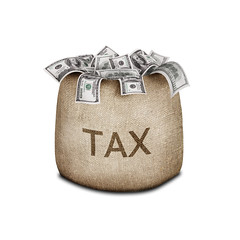The alternative minimum tax was originally enacted to
ensure that high-income taxpayers pay at least a minimum amount of tax if they
benefit from certain deductions and other tax preference items.
The AMT tax computation is a parallel system to the regular
tax system with its own definitions of income and expenses, rules for income
recognition and timing, and exemptions and tax rates. Although every taxpayer
is subject to AMT rules, the additional tax is paid only if the tax computation
under AMT rules is higher than the tax computed under regular rules.
Even though the AMT was originally targeted toward
high-income taxpayers, factors, including inflation and treatment of certain
tax credits, can sometimes push lower-income taxpayers into an AMT situation.
How AMT Works
Certain items called “adjustments and preferences” are
added to federal gross income. Personal exemptions that reduce taxable income
for regular tax purposes are not allowed for AMT purposes and are added back to
taxable income. A separate AMT exemption amount is allowed, depending on the
taxpayer’s filing status. After the AMT adjustments and preferences are added
to income, and the AMT exemption amount is subtracted, an AMT tax rate of 26%
to 28% is applied. If the resulting tax is greater than regular tax, the
difference is added to regular tax on line 45, Form 1040.
Example #1: When computed under regular rules, John’s income tax is $4,700. When computed under AMT rules, the tax amount is $3,900. Since his tax computed under AMT rules is less than his tax computed under regular rules, John will not pay any additional amount for AMT.
Example
#2: Assume the same facts as Example #1, except when computed under AMT rules,
John’s tax amount is $5,100. Since his tax computed under AMT rules is higher
than his tax computed under regular rules, John must pay the difference in
additional tax. John must report additional AMT tax on line 45, Form 1040, in
the amount of $400.
AMT Triggers
Items that commonly trigger AMT include high deductions for
state income tax, dependent exemptions, exercise of incentive stock options,
and large miscellaneous itemized deductions reported on Schedule A, Form 1040.
Other AMT adjustments and preferences include:
•
Medical and dental expenses. A portion of these
deductions may need to be added back for AMT purposes.
• Taxes
from Schedule A, Form 1040.
• Certain
mortgage interest deductions.
• Tax
refunds reported on Form 1040.
• Certain
investment interest expense.
• Certain
depletion expense.
• Net
operating losses.
• Interest
from specified private activity bonds.
• A
portion of gain from section 1202 small business stock.
• Certain
gains from dispositions of property.
• Certain
depreciation adjustments.
• AMT
loss limitations.
• Certain
circulation costs.
• Long-term
contracts.
• Certain
research and experimental costs.
• Pre-1987
installment sale income.
• Intangible
drilling cost preferences.
AMT “Patch”
Because the original AMT law did not include a provision to
index the exemption amount for inflation, over the years, a growing number of
middle-income taxpayers have become subject to AMT. Historically, Congress
limited the impact of the AMT by passing temporary legislation, often referred
to as “patches,” to provide relief for millions of middle-income taxpayers who
might otherwise be affected by AMT. Congress has patched the AMT every year for
the past several years.
The “fiscal cliff” tax law that was passed on January 2,
2013, included a provision making the AMT patch permanent. Exemption amounts
were retroactively increased for 2012 and will be indexed for inflation in
future years. Under the new legislation, personal credits will also be allowed
against the AMT on a permanent basis.





